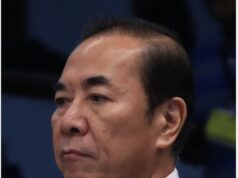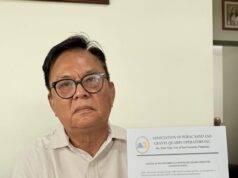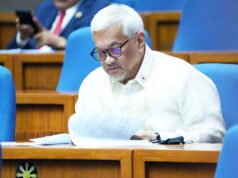DUBAI MALL, reputedly the largest shopping center in all of the United Arab Emirates.
At the mall’s Food Court, Leigh serves tom yum goong at the Pad Thai stall. Vivian does spicy buffalo wings at Texas Chicken. Irma dishes out Tandoori chicken in the eponymous resto.
Then, there is Amanda serving shawarma at Kebab Grill and Joanne preparing bento boxes at Soy.
International eats flavoured by the smiling services of all-Filipino crews. All Kapampangans too.
Anna hawks shirts and bags at a kiosk in the middle of the mall’s spacious walkways where Virgie sells perfumes in another stall. Liza answers all your inquiries about galaxies – of the phone kind, that is – at Samsung. Maan does her sales pitch with Canon at Grand Stores Digital.
Aye, they are all cabalens.
Deira City Centre, next best to Dubai Mall, per the mall rat Ashley Manabat’s reckoning, takes the same pattern.
Fe (wo)mans Fujiyama; Dindo, Al Farooj; Cherry, Baskin Robins; Dennis, Fat Burgers; Lino, Potbelly.
At Al Falak Electronics, Leila teaches you the best value for your money in Nikon cameras. Gina and Gloria lend ladies their fashion sense at Debenhams. And Karen helped me find bargains for my grandkids at H&M.
It is not only in the restaurants and malls that the Kapampangans make their great presence felt but in the hospitals, construction and industrial firms and even at the international airport too, says Angelo G. Timbol of Angeles City who has worked here for over 30 years.
Timbol, managing director of the oilfield, marine and industrial supply firm JETTY, approximates some 50,000 cabalens of the whole UAE’s estimated 300,000 Filipino workers.
Central and Northern Luzon provinces account for a larger number – compared to other regions – of those we casually met and randomly sampled at the malls there.
Of the Filipino cashiers, checkers and baggers at Carrefour, the large French hypermarket chains, mostly, if not Kapampangans, are from Zambales, Bataan, Pangasinan and the Ilocos provinces.
There are no Filipino taxi drivers in Dubai though. If our Pakistani cabbie were to be believed.
“Filipinos are too educated to be mere taxi drivers,” he said. “This is a job for those with little or no schooling.”
In the social hierarchy of overseas workers in Dubai, Filipinos do indeed occupy the higher tiers. They not only look smarter but moreso, happier.
“The mastery of English, talent, skills, industry and how we can easily adapt to a different culture are our cutting edge in the Dubai job market,” Engineer Timbol said.
And the Kapampangan excels in those values above his kababayans. A bit of regional chauvinism there.
A commonality now: This inquiry from Kapampangans, Zambalenos, Ilocanos, Pangasinenses, even those from Quezon City and the Camanava area upon learning we are mediamen from around the Clark area: When shall we start flying home through Clark?
A large number of those we met told us they have long heard of plans for Dubai-Clark flights.
Yes, there have been plans, we concurred. We did not have the heart to tell them, these have stayed as plans. Maybe even forgotten plans now.
Just to make sure, I searched the web and here is what I got from Business World Online dated Monday, June 9, 2008:
…The DMIA is being groomed as the next international gateway of the Philippines, and Mr. Luciano said there would be “more airlines to fly from the Middle East to the Philippines” to serve Filipino workers abroad.
On Friday, a chartered plane from Trans-global Airline arrived in the Philippines from the United Arab Emirates (UAE) via the DMIA. It was the first airline to fly to the Philippines from the Middle East via Clark.
The same airline is scheduled to fly to Fujairah in the UAE on Mondays and Wednesdays starting today. It uses a 160-seater MD83 aircraft.
Fujairah is one of the seven emirates that constitute the UAE; Dubai and Abu Dhabi the better known among them.
Maybe the good president-CEO of Clark International Airport Corp., Chichos Luciano can tell us whatever happened to that planned route.
Oblige us – and our OFWs in Dubai – with a response, Sir.




